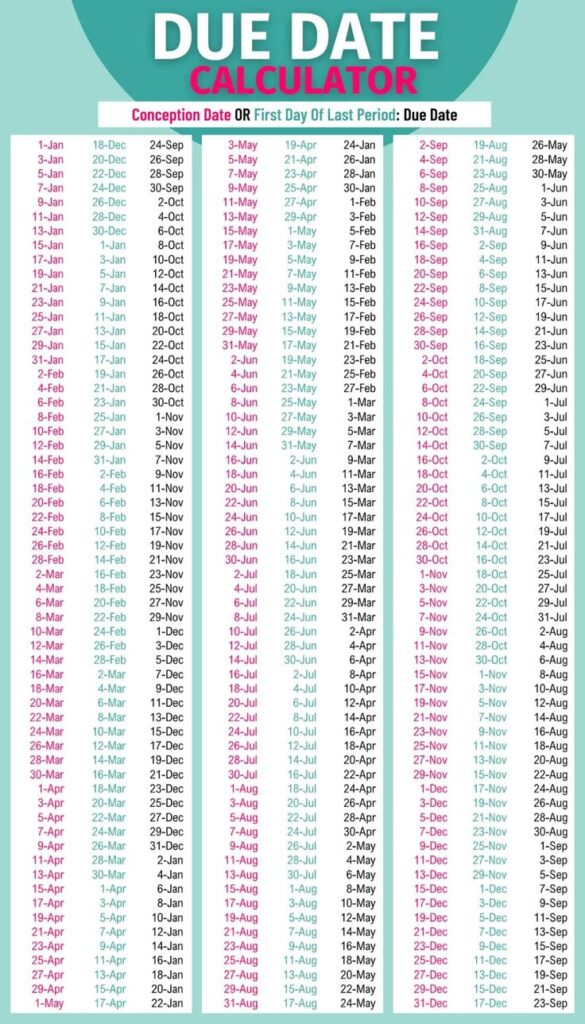Wondering exactly when your baby will arrive?
The uncertainty of pregnancy timing can make planning for maternity leave, baby showers, and hospital stays extremely difficult.
Our Due Date Calculator removes this stress by giving you a clear timeline based on your last menstrual period, helping you prepare with confidence for one of life’s most important arrivals.
Due Date Calculator: Predict Your Pregnancy Timeline Accurately
Due Date Calculator

Free Online Due Date Calculator
Example Calculation:
- LMP: January 1, 2024
- Add One Year: January 1, 2025
- Subtract Three Months: October 1, 2024
- Add Seven Days: October 8, 2024
What does LMP and Cycle Length mean?
LMP: Provides a consistent reference point for the calculation.
Cycle Length: Accounts for variations in menstrual cycles, ensuring a more personalized due date.
Additional Factors for Accurate Due Date Calculations

While the Due Date Calculator offers a reliable estimate, several factors can influence its accuracy:
Ultrasound Measurements:
When: Early in the pregnancy.
Why: Measures the size of the embryo or fetus to provide a more precise due date.
Ovulation Date:
Definition: The day you release an egg from your ovary.
Relevance: Knowing your ovulation date can refine the due date calculation, especially if you have irregular cycles.
Prenatal Care:
Importance: Regular check-ups help monitor the baby’s growth and adjust the due date if necessary.
🤰 Check Out These Related Calculators!
Planning for a baby? Here are some other useful calculators to help you along the way:
• 🎂 Age Calculator – Find out exactly how old you are in years, months, days, and hours.
• ⚖️ BMI Calculator – Check if you’re in a healthy weight range before, during, or after pregnancy.
• 🔥 BMR Calculator – Estimate how many calories your body burns at rest, helpful for managing nutrition.
• 📏 Area Calculator – Planning a nursery? Quickly measure room sizes for decorating and furniture placement.
• 🎲 Random Number Generator – Need help picking a baby name? Let randomness inspire you!
🔗 Try these free tools now at CalculatorLord.com! 🚀
Tips for Using the Due Date Calculator Effectively
Provide Accurate Information:
Ensure you enter the correct first day of your last menstrual period and an accurate cycle length.
Update When Necessary:
If there are changes in your cycle length or other factors, recalculate your due date to stay updated.
Why Knowing Your Due Date is Important
Understanding your due date helps you plan prenatal care, prepare for the baby’s arrival, and schedule important medical appointments. It also allows you to manage your time effectively, ensuring you’re ready for one of life’s most wonderful events.
What is a due date?
A due date is the estimated day your baby will arrive. Doctors calculate this date as 40 weeks from the first day of your last period. Only about 5% of babies actually arrive on their exact due date. Most babies come within one to two weeks before or after this date.
How do doctors calculate the due date?
Doctors use a method called Naegele’s rule to find your due date. They take the first day of your last menstrual period, add one year, subtract three months, then add seven days. For example, if your last period started on February 1, your due date would be around November 8. Ultrasounds in early pregnancy can also help set or adjust this date.
Why might my due date change during pregnancy?
Your due date might change if an early ultrasound shows the baby’s size does not match the date based on your last period. This often happens if you have irregular cycles or if you were not sure about your last period date. The date from an early ultrasound (before 14 weeks) is usually more exact.
What happens if I go past my due date?
If you go past your due date, your doctor will watch you more closely. They might do more tests to check your baby’s health, like non-stress tests or ultrasounds to check amniotic fluid levels. Most doctors will talk about ways to start labor if you reach 41 or 42 weeks, since risks to the baby can increase after this point.
